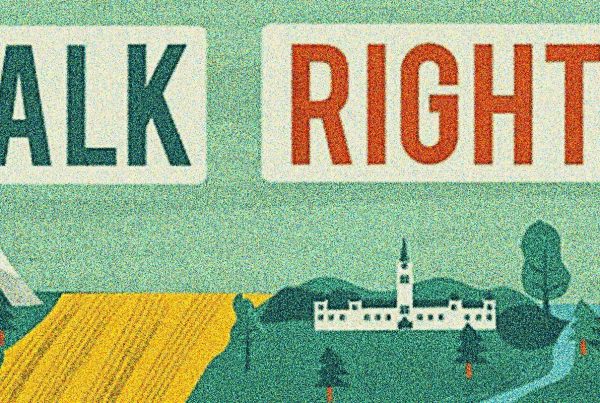TalkRights features content produced by CCLA volunteers and interviews with experts in their own words. Opinions expressed here do not necessarily represent the CCLA’s own policies or positions. For official publications, key reports, position papers, legal documentation, and up-to-date news about the CCLA’s work check out “THE LATEST” section of our website.
In 1995, British Columbia became the first province in Canada to introduce a law creating “safe access zones” – commonly called “bubble zones” – around facilities related to providing abortion services.
Nearly three decades later, provinces are drawing from the same toolbox to create bubble zones around other healthcare facilities, following widespread protests against COVID-19 safety measures.
In light of these developments, here is a look at what bubble zones are, how they originated, and why there’s renewed interest in them today.
What are bubble zones?
Bubble zones, or safe access zones, describe areas in which certain activities are limited or prohibited in order to protect access to healthcare. For example, B.C.’s Access to Abortion Services Act restricts protest, graphic recording, harassment, “sidewalk interference”—which includes advising or persuading a person to refrain from using abortion services—within zones set out in the Act. These locations include facilities providing abortion services as well as doctor’s offices and homes.
Similarly, Ontario’s Safe Access to Abortion Services Act, which came into effect in early 2018, prohibits activities within an access zone, such as:
- Advising or persuading a person to refrain from accessing abortion services
- Performing “an act of disapproval concerning issues related to abortion services,” including by oral, written, or graphic means
- Persistently requesting a person refrain from accessing abortion services
As of January 2022, at least six provinces had their own versions of safe access laws, including British Columbia, Newfoundland and Labrador, Quebec, Ontario, Alberta, and Nova Scotia.
How did bubble zones originate?
The Supreme Court of Canada struck down the criminal prohibition on providing abortion services in its landmark 1988 decision in R v Morgentaler. Despite this change in the law, protests against abortion continued and reached violent levels in B.C. in 1994, when, as the Associated Press reported, “a sniper toting an AK-47” shot Dr. Garson Romalis as he was eating breakfast in his home.
Romalis survived, but his shooting inspired lawmakers to take steps to protect patients seeking abortion services and the doctors providing them. The province passed the Access to Abortion Services Act in 1995.
Soon after, a court challenge emerged. Maurice Lewis was charged under the Act for protesting and engaging in sidewalk interference within a safe access zone established in front of the Everywoman’s Health Centre in Vancouver.
Lewis argued the Act unjustifiably infringed upon his right to freedom of expression, freedom of association, and freedom of conscience and religion under Section 2 of the Canadian Charter of Rights and Freedoms. The B.C. Supreme Court did find that the law infringed on Charter rights. However, it held the law was justified under Section 1 of the Charter and upheld it.
In her reasons for judgment, Sounders J wrote, “Health care has fundamental value in our society. A woman’s right to access health care without unnecessary loss of privacy and dignity is no more than the right of every Canadian to access health care.”
Why are we talking about this now?
Until the COVID-19 pandemic, provincial laws establishing bubble zones focused on access to abortion services. In 2021, however, some provinces took the bubble zone approach and applied it to other healthcare facilities and schools.
In the fall of 2021, demonstrators upset with COVID-19 safety measures, including mandatory masking and vaccine policies, crowded around hospitals, blocking access for employees, patients, and emergency personnel. The actions drew widespread condemnation.
In response, provinces including B.C., Newfoundland and Labrador, Nova Scotia, Quebec, and Saskatchewan passed or announced intentions to pass legislation establishing safe access zones around hospitals and, in B.C. and Quebec, schools. B.C.’s Access to Services (COVID-19) Act created bubble zones of 20 metres around hospitals, COVID-19 testing and vaccination sites, schools, and other facilities. Laws in the other provinces established or would establish zones of 50 metres.
Alberta, on the other hand, expanded powers under its Critical Infrastructure Defence Act, a law that has been widely criticized for potentially violating Charter rights, to include hospitals and other health facilities. Ontario Premier Doug Ford promised similar legislation in regards to protests around “critical infrastructure.”
At the federal level, the government passed Bill C-3, An Act to amend the Criminal Code and the Canada Labour Code, in December 2021. While the Act does not create bubble zones, it does make it a criminal offence to intimidate a person “in order to impede them from obtaining health services,” or to intimidate a health professional in order to impede their duties. It also makes it an offence to obstruct or interfere “with a person’s lawful access to a place at which health services are provided.”
Guest Author Emily Chan
About the Canadian Civil Liberties Association
The CCLA is an independent, non-profit organization with supporters from across the country. Founded in 1964, the CCLA is a national human rights organization committed to defending the rights, dignity, safety, and freedoms of all people in Canada.
For the Media
For further comments, please contact us at media@ccla.org.




